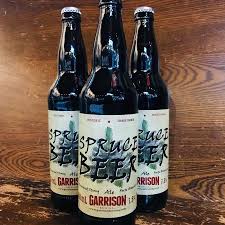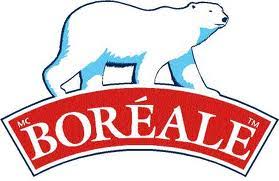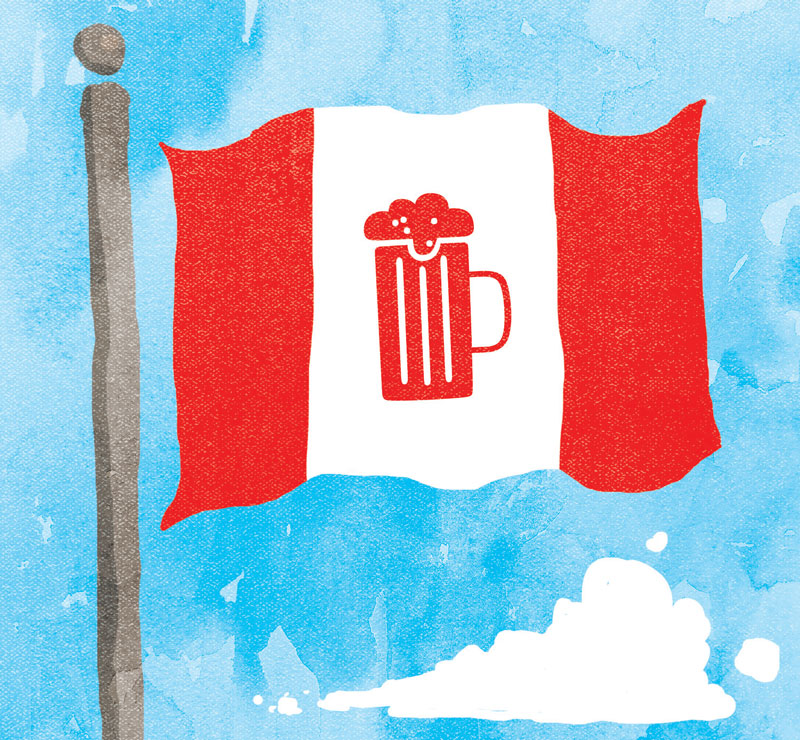Recently I came across a presentation by Victor North, who is a Beer Judge Certification Program Director and instructor at the Niagara College Brewmaster Program (follow the links to the presentation and Powerpoint slides found here). North makes the bold case that we should consider that there are beer styles whose origins and pedigree are uniquely Canadian. Specifically he identifies four candidates for designation as “Canadian”.
North puts forth a richly nuanced and well thought-out argument. He offers a fascinating analysis of how inclusion in the official BJCP Style Guidelines both recognizes legitimacy and creates legitimacy for styles and style-wannabes. He also discusses the chicken-and-egg nature of demonstrating to the BJCP that something is a legitimate style. Both worthy topics for discussion. However, in this post I want to focus on his central question of whether there is a clearly identified “Canadian” style.
North places some parameters around what he means by “Canadian”. He is looking for styles that clearly originate in Canada, have a distinct Canadian experience, have or did have commercial production, and are sufficiently differentiated from existing styles to allow for separate classification.
His four candidates are: Ontario Pale Ale, Quebecoise Rousse, Canadian Ice Beer, and Spruce Beer. He also discusses a couple of potential Indigenous styles, but I will set them aside for the moment due to my lack of knowledge in that area.
Briefly, Ontario Pale Ale is a subset of pale ales that evolved in Ontario and is exemplified by Mill Street Tankhouse Ale. Quebecoise Rousse follows the Quebec brewing tradition of amber-coloured ales. Ice Beer are the gimmicky lagers that emerged in the 1980s and now reside in dark corners of the discount beer segment but are purported to undergo ice distillation to increase alcohol and flavour. It is obvious what he means by Spruce Beer. He has helpfully drawn up provisional style guides for the four styles as part of an effort to encourage Canadian homebrew competitions to include them.

Before I discuss North’s candidates, I want to add a number of Canadian breweries have released something called Canadian Pale Ale, that many talk about as a Canadian style. There is not a tonne of consistency across the beer (likely disqualifying it as a style), but most do seem to be pale ales with slightly less hop presence and more malt balance. To me the description sounds somewhat like what North describes for Ontario Pale Ale (although many are less hoppy than the examples he cites).
I have no intention of criticizing North for his choice of styles. He has put a tonne of work into this, is an experienced and respected beer judge and knows more than a thing or two about beer. Instead I just want to make a couple observations, ask a couple of questions and hopefully get a discussion going.
North anchors his argument on the fact that regionally based styles are often subtle redirections of more broadly understood styles. His core example is Irish Red Ale (IRA), which is not all that different from a handful of other amber colour styles in the BJCP guidelines. He makes a good point, but I am not convinced that the Canadian examples pass the regional style test.
Let me first dispense with Ice Beer. While there is clearly a procedural distinction that sets Ice Beer apart: mild concentration of the beer through freezing and extracting some of the water. Its links to Eisbier are obvious. However, I would argue the corporate origins and short-lived nature of the style (yes, I know there are still Ice beer being sold) disqualify it. If we were to pay attention to every fad from the big boys we would be adding a whole lot of new styles – Lime Beer, Low Carb Beer, Extra Strong Light Beer, Dry Beer, etc. I recognize North is simply arguing that a) it is an innovation born in Canada and; b) it is still being brewed today. The current BJCP guidelines also include styles that are largely brewed by corporate brewers. My concern is that the style never existed outside the corporate breweries of Molson and Labatt (and a couple of discount brewery offshoots). Even North American Light Lager has craft examples. I guess at the core of this, it might truly be a Canadian beer, but do we really want to be famous for it?
On the surface Spruce Beer seems to have the best case. It has a clear demarcation from other styles through the use of spruce and can make a legitimate claim to Canadian roots – although I will admit I have not researched the history well enough to know if we can reject American origins. We know it has a consistent presence in Canadian beer, with more than a handful of breweries regularly brewing the style. All check marks so far. Here is my question: is the addition of a non-traditional ingredient enough to create a style? There are no other styles in the BJCP guidelines that single out one ingredient (Oatmeal Stout style might be the exception). Spruce beer actually fits quite nicely in spice, herb or vegetable beer. As a second observation, breweries have used other tree/plant additions to flavour beer. I think about Yukon Brewing’s Birch Beer which is the same concept but with a different species of tree. And there is hemp ale. Are these stand-alone styles? Not in my mind, which raises question marks about Spruce Beer.

The two more challenging suggestions are Ontario Pale Ale and Quebecoise Rousse. I think there are two-and-a-half issues with these two ideas. First, both are a subtle regional tweak on a broader style. I understand that is North’s point, but my question is do they vary ENOUGH from the core style to merit their own listing? I don’t have a conclusive opinion here, but a slightly less hoppy pale ale might be accommodated in the American Pale Ale category. We (the collective beer world) allow for a degree of variation in a number of styles, so it is a choice that pale ale is defined more narrowly.
There may be a stronger argument for Quebecoise Rousse. In a way one could argue it is just an Irish Red with a more caramel finish or a lightly hopped American Amber. North’s descriptions acknowledge the similarity. However, I think North may have identified a hole in the BJCP guidelines. Where does one put an malty amber ale that isn’t overly bitter? That said, I am not sure we can identify that type of beer as distinctly Canadian. New Belgium’s Fat Tire would seem to fit that description quite well.
The second concern is whether there is too much variance WITHIN the proposed styles. I realize this contradicts the previous concern, but such is the nature of conversations. I have sampled a number of both styles and anecdotally believe there is quite a large range within even those listed as commercial examples in his descriptions. His proposed statistics offer noticeable ranges in colour, IBU and alcohol, enough to create significant perception differences. Having said that I recognize there are a number of BJCP categories that display large statistical ranges, so that is not automatically disqualifying. However it does weaken the case.

The 1/2 reason is the classic Canadian argument. It can be argued the two styles are Central Canada centric. In an exchange with North, he indicated that the geographic specificity increases the coherence of the styles and matches the marketing history of those beer (both names are common). He also acknowledges he is less familiar with beer out west (and farther east), which is totally fair. While I get his point, I do think we need to grapple with the regional reality of craft beer in Canada.
Just to use one example, how similar is Yukon Red to a Quebecoise Rousse? I think you could make a solid argument that they fit together. Similarly Village Neighbour, dubbed a Canadian Pale Ale, has much in common with Ontario Pale Ales. I can think of others in my part of the country.
North warns against grabbing a loose coalition of vaguely similar beer and tacking a national label on them. He has a point. But then maybe we need a different approach than geographic region. I have no great ideas as to what that would be, but it might help create nation-wide support for adopting them as styles.
Any exercise of this nature is bound to be imperfect. At least North is trying to ANSWER what many people constantly ask – is there a Canadian style?
At this point the answer is likely a solid MAYBE. Thanks Victor!


November 2, 2020 at 4:56 PM
No, there is not a Canadian beer style. For that to exist, the native peoples of this land would have had to have been making beer before the boatloads of immigrants arrived. The recipes and brewing techniques all came from overseas.
November 4, 2020 at 10:24 AM
By that logic there aren’t any European styles of beer because they were brewed in Egypt and Mesopotamia before Germany and Belgium….
November 4, 2020 at 9:23 PM
Is there any proof that there was beer here in this country before it was settled by immigrants?
November 3, 2020 at 10:15 AM
Thats not quite right North Amarican Pale Ale was created after all the beermakers arrived as was Steam Beer. Recipes are created all the time. As are brewers.